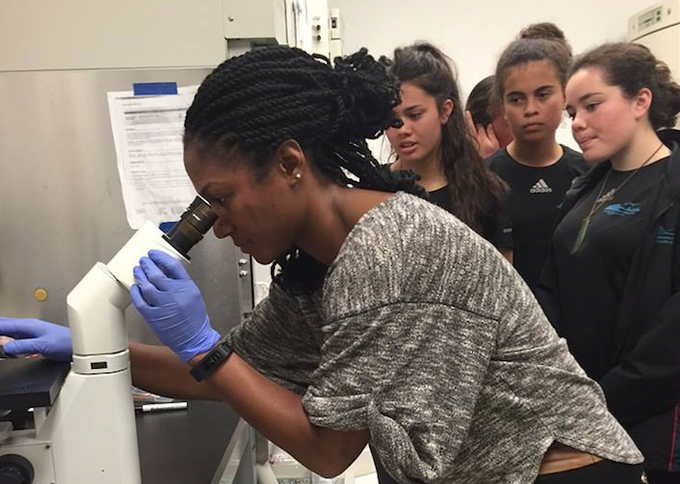Kids in the Valley: Twelve Maori school students spend a week in Silicon Valley

During the week, the students attended a bootcamp at Stanford University, meeting with PhD students and professions, met with Silicon Valley entrepreneurs, investors, and visited the Institute of the Future and Google.
“Silicon Valley is one of the places on earth most alive with ideas, and Stanford is one of the most interdisciplinary and well-connected universities in the world” says Hemi Rolleston, Callaghan Innovation general manager M?ori Economy. “This trip is a priceless opportunity for them to hone their entrepreneurial skills, build creative confidence and embrace innovative thinking. Everyone involved in this delegation wants to help inspire these children to consider future careers in science and technology.”
To earn their way onto the trip, the students competed with their peers in a selection process that included designing a playground for the school that catered all all age groups in the school, and writing an essay on their skills and aspirations. What was initially intended at ten spots were extended to twelve due to the impressive calibre of the applicants.

The trip was planned to mimic the journey of a technology from idea to development to commercialisation, starting at Stanford, working their way to the Google campus.
“We wanted to give the kids a good look at where that creativeness from Stanford has gone and what the end product is,” says Grant Ranui, head of technology at Te Wharekura o Mauao. “A lot of the people we’ve met have come through Stanford and they’ve thought, they’ve created, and now we’re seeing the end products.”
Rolleston says the goal of the week is to broaden the horizons of both the students who made the trip and the community they’re returning to.
“I like to think that some of them will be back at Stanford or in Silicon Valley in the future, and being potential role models for other students at their school,” he says. “They’ve been learning from a lot of social entrepreneurs – people that want to save lives, that are creating technologies and research that are going to make a difference. So from a Maori perspective, the students are looking at a way to make a difference for their families, their hapu, their iwi and their language, their culture.”

Rolleston also hopes to bring back some of the multidisciplinary approach to tech education he’s seen at Stanford and integrate it into the school’s technology department. “We’re trying to show them what’s going on in the world at the moment, in terms of innovation and creativity, then create, within our school, an environment that continues that learning,” he says. “We can’t plan for what’s going to happen in the future, but we can see what’s happening right now and where the world’s heading from the experts, like Stanford’s engineering staff, chemistry, electronics, robotics staff.”
“We’re looking at updating our science labs and facilities so that the learning environment at the school itself . And looking at the teaching pedagogy itself and looking at how learning is happening how around certain pockets of Universities in the world. At Stanford, the whole learning environment is different, the whole teaching philosophy is different. So we can look at our teaching so our students will have choices.”




